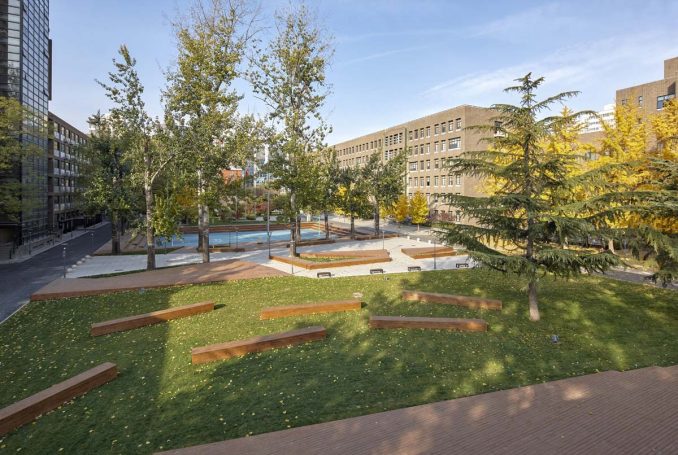
In traditional campuses in China, you can always see a similar layout of buildings and sports fields connected by roads for vehicular traffic and filled in with lawns. The Affiliated High School of Peking University, dating back to the early 1960s, was no exception. Over more than half a century, the campus experienced several shifts but still kept many of its original characteristics.
Today, based on the school’s new concept of student-centred education, Crossboundaries adjusted this bygone campus’ landscape, liberating its spacial constraints, complementing the transformation of indoor learning space, sports and art center.
Returning roads to pedestrians
We found in these traditional campuses, pedestrian flow is usually pushed to the sides of the road, people prioritized after vehicles, despite the frequency and volume of people’s traffic surpassing any vehicular activity.
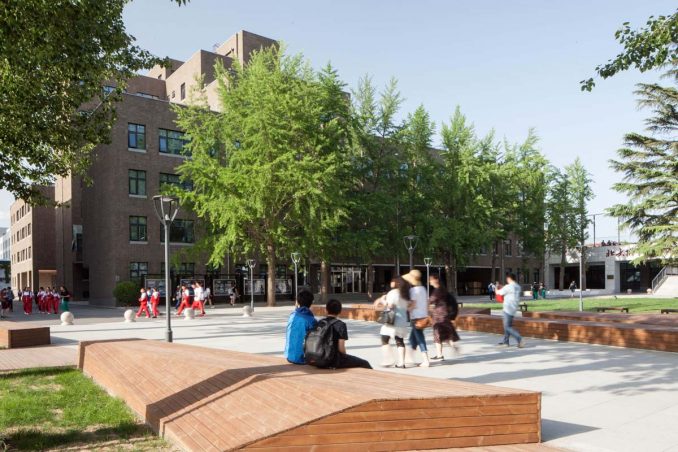
The perceived presence of cars reduces the sense to move around the campus comfortably and maintains an underlying sense of unsafety. People don’t only walk to pass from one point to another, they also have the appetite to spend time in the outdoor spaces to rest or shake off excess energy. So where is the space for these activities? To shift in priority of spaces for pedestrians and cars, a main road in the central area was cancelled, leaving more space for students and teachers.

Diminishing the “isolated islands”
Removing the road, we also reinvented several previously enclosed, single-functioned spaces on the campus, giving way to more consistent free space to meander, rest or play.
Flipping a “caged” basketball court into an open sunken activity ground, its boundary fence was entirely removed and seating added to form a new edge. Now entirely open, the area is transformed giving both simplified visual and physical connections, offering alternative space in the campus for communication, exchange and interaction.
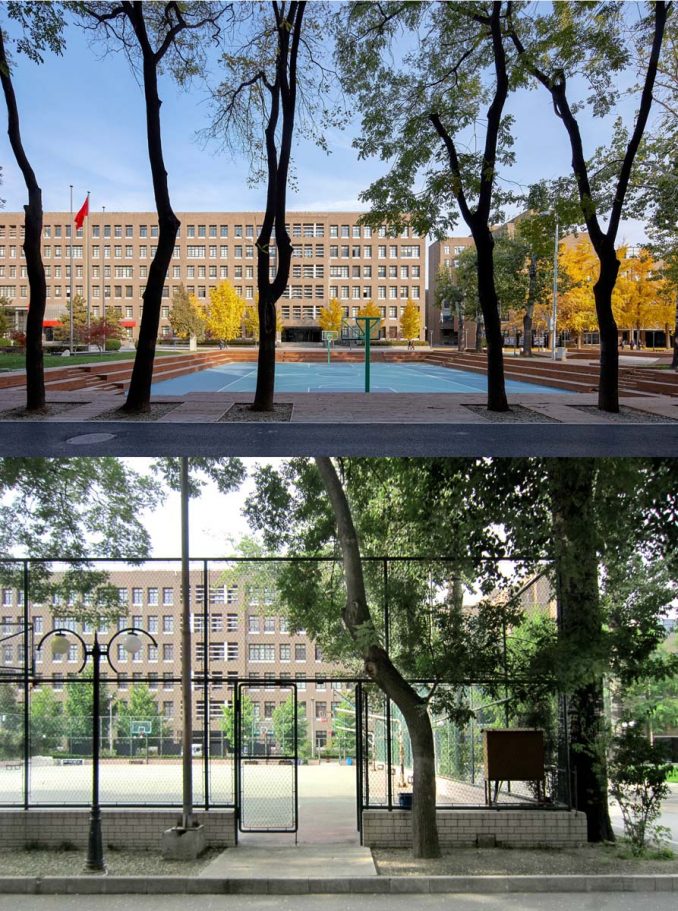
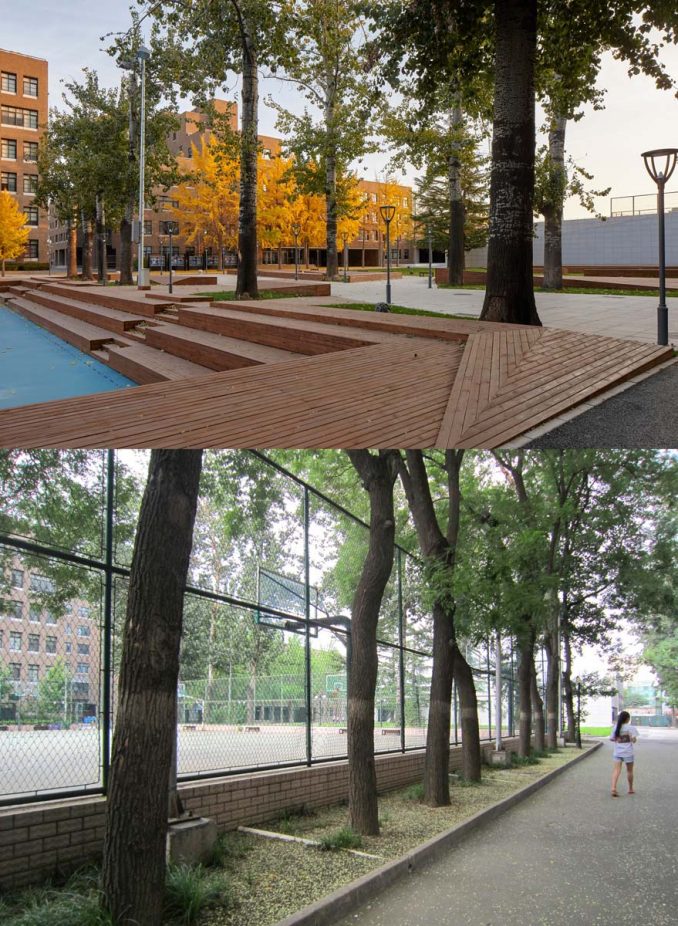
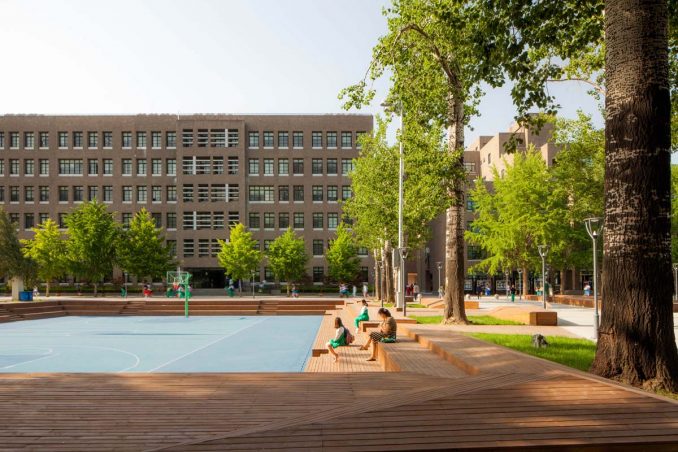
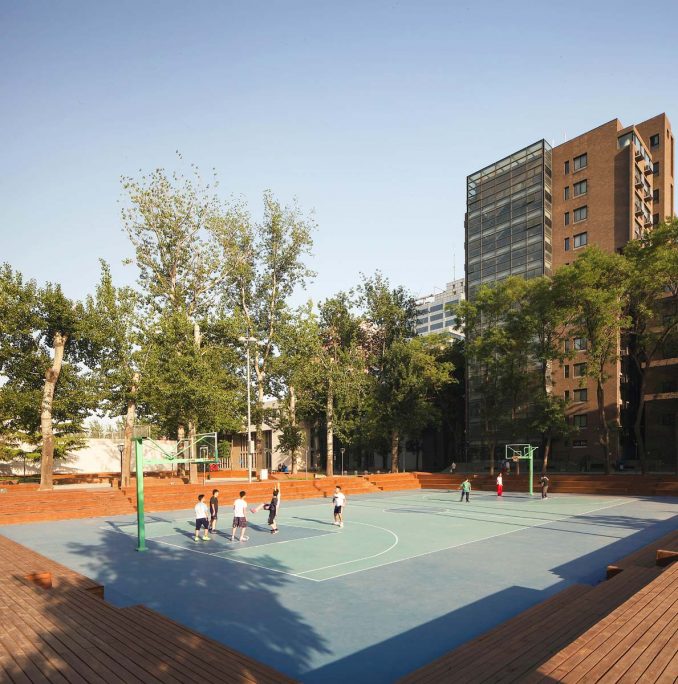
In the center of the campus, there is a large lawn, a formerly underused place for no one would enjoy such a large empty space, especially in a context where it is not customary to sit on the grass. Converting this uninviting lawn into a functional and useful space for students and teachers, we added a variety of benches on and near the lawn, creating an “outdoor classroom” or “living room” for all kinds of gatherings. Hidden just around the corner is another outdoor space that served only to allow firetrucks to pass in the event of an emergency, severing two active parts of the same building. Ultimately its greatest asset now is adding purpose and appeal to a former dead space, serving as a complex set of functions, featuring a 100-meter running track, display walls and some seating.
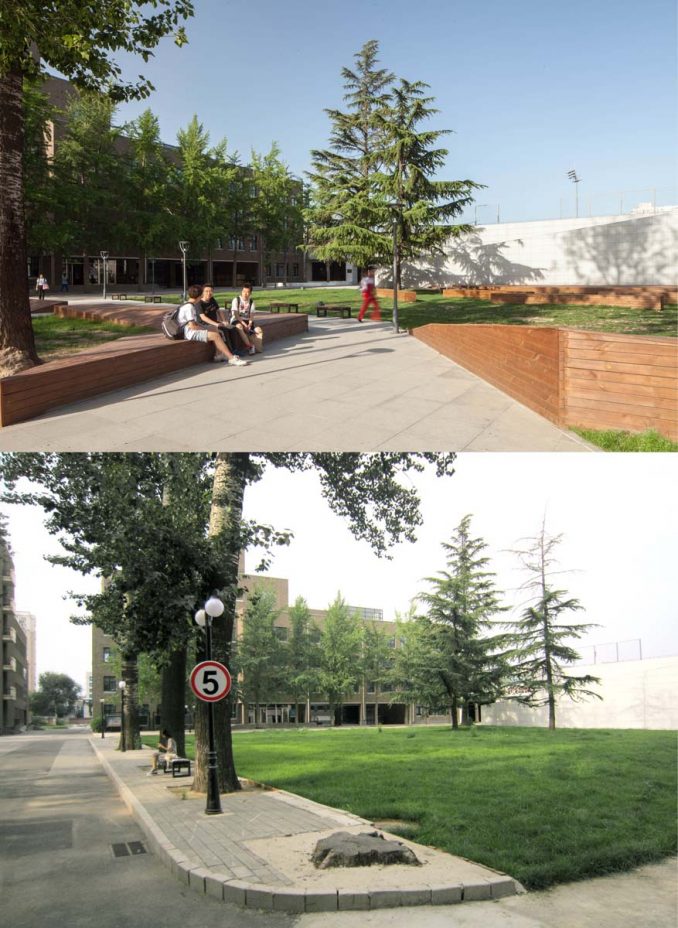
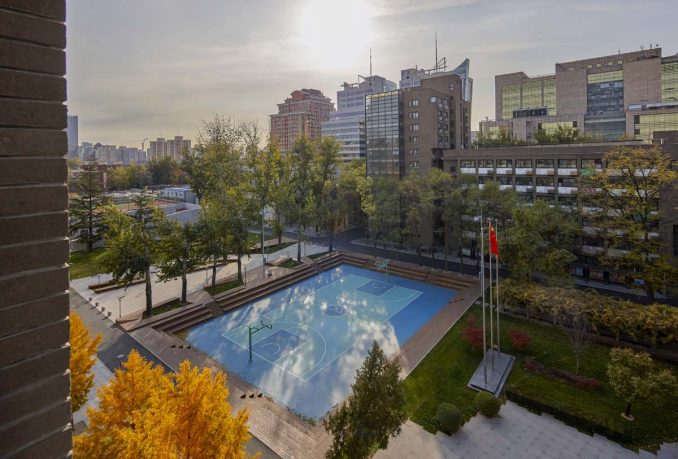
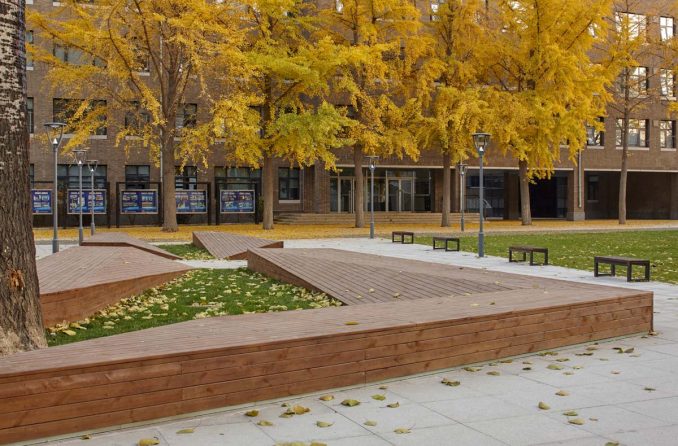
The Affiliated High School of PKU
Location: Beijing, China
Client: The Affiliated High School of PKU
Total Site Area: 51560 sqm
Design period: March to May, 2018
Construction period: July to September, 2018
Architect: Crossboundaries, Beijing
Partners in charge: Binke Lenhardt, DONG Hao
Design Team: Sean Yu, Hou Jinghui, Hu Bingyu, Gao Yang, Hao Hongyi, Irene Sola, Tang Jiayin, Wang Xudong
Collaborators: BIAD Yuan Jing Landscape Architecture Planning & Design Studio, BIAD Architectural Design Institute No. 5
Photographers: Yang Chaoying, Hao Hongyi
